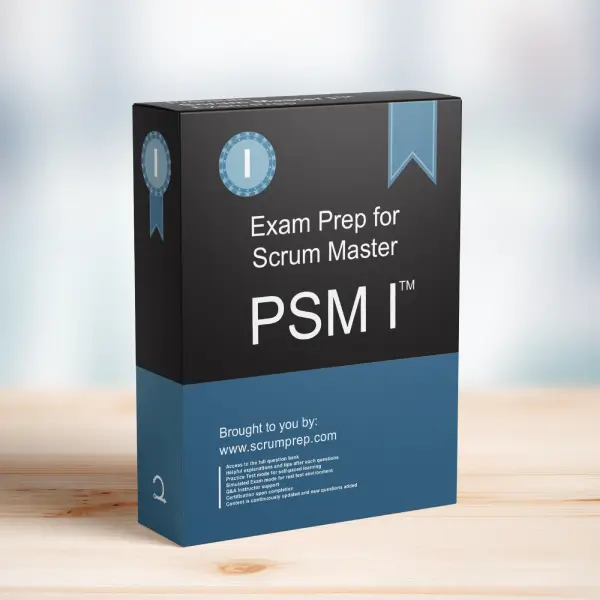Definition of Done in Multi-Team Scrum Projects
In Scrum, when multiple teams are working on a single product, maintaining a common understanding and consistency in the quality of increments is essential. This concept is often tested in the PSM I exam.
Exam Question
When multiple Scrum Teams are working on a single product, what best describes the Definition of Done?
(choose the best answer)
A. Each Scrum Team uses its own, but must make their definition clear to all other Teams so the differences are known.
B. Each Scrum Team defines and uses its own. The differences are discussed and reconciled during a hardening Sprint.
C. The Scrum Masters from each Scrum Team define a common Definition of Done.
D. When multiple Scrum Teams are working together on a product, they must mutually define and comply with the same Definition of Done.
Correct Answer
D. When multiple Scrum Teams are working together on a product, they must mutually define and comply with the same Definition of Done.
Key Aspects of the Definition of Done
D. When multiple Scrum Teams are working together on a product, they must mutually define and comply with the same Definition of Done
In a multi-team environment, it is crucial that all Scrum Teams working on the same product adhere to a single, common Definition of Done. This ensures consistency and quality across all increments produced by the teams. A common DoD provides transparency and clarity, helping all teams understand the criteria that must be met for work to be considered complete. This mutual agreement on the DoD helps in integrating work seamlessly, reduces potential integration issues, and ensures that the product is potentially shippable at the end of each Sprint.
Examining the Other Options
A. Each Scrum Team uses its own, but must make their definition clear to all other Teams so the differences are known: This option could lead to inconsistencies and integration issues. While transparency about different DoDs is beneficial, having multiple definitions complicates the integration process and reduces overall product quality.
B. Each Scrum Team defines and uses its own. The differences are discussed and reconciled during a hardening Sprint: Relying on a hardening Sprint to reconcile differences contradicts Scrum principles. Scrum encourages continuous integration and delivering potentially shippable increments at the end of each Sprint, making the idea of a hardening Sprint counterproductive.
C. The Scrum Masters from each Scrum Team define a common Definition of Done: While Scrum Masters play a facilitative role, the responsibility of defining the DoD lies with the entire Scrum Team. It is a collaborative effort, ensuring that all team members understand and commit to the DoD.
Responsibilities in Scrum
Product Owner: Ensures the Product Backlog is ordered and refined to maximize value and align with the team’s capacity. Works with the Scrum Team to ensure clarity and readiness of backlog items.
Scrum Master: Facilitates the understanding and adherence to the common Definition of Done. Coaches the team in maintaining high-quality standards and ensures that all Scrum events are productive and effective.
Developers: Collaborate to create and adhere to the common Definition of Done. Ensure that all necessary tasks are completed to a high standard, including coding, testing, and documentation.
Relevance to the PSM I Exam
Understanding the importance of a common Definition of Done in a multi-team environment is crucial for the PSM I exam. It emphasizes the need for consistency, transparency, and collaboration across teams to ensure high-quality increments.
Key Takeaways
- Common Definition of Done: Ensures consistency and quality across all Scrum Teams working on the same product.
- Collaboration: Requires mutual agreement and understanding among all Scrum Teams.
- Transparency: Helps in integrating work seamlessly and reduces potential integration issues.
Conclusion
In summary, when multiple Scrum Teams are working on a single product, they must mutually define and comply with the same Definition of Done. This approach ensures consistency, quality, and seamless integration of work, aligning with Scrum principles. Understanding this concept is essential for success in the PSM I exam and effective Scrum practice.
For comprehensive preparation and practice exams, check out PSM I Exam Prep to enhance your understanding and application of Scrum principles.



